Old Russian pasta traditions: Mushroom noodle soup (RECIPE)
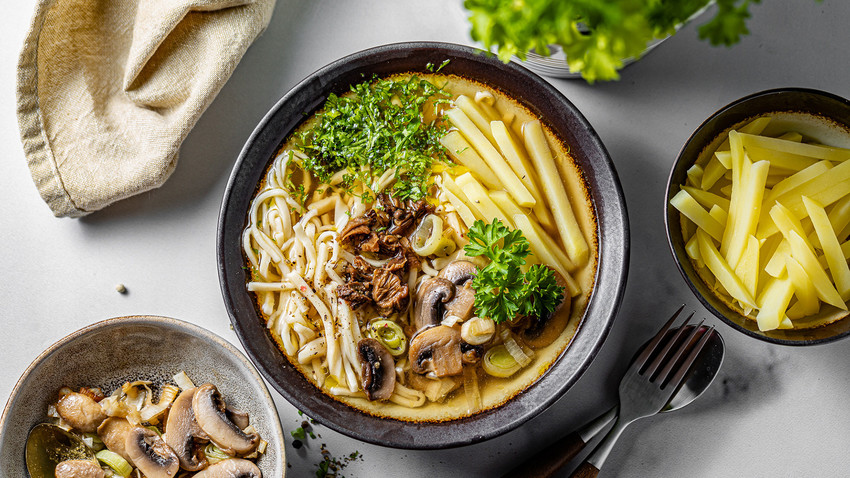
The recipe sounds simple, but you’ll be surprised by the styling and taste of this Russian noodle soup.
Yulia MulinoThis recipe is taken from the famous cookbook by Elena Molokhovets. Even though it has a history of 200 years the recipe turned out amazingly modern regarding plating. At least in my interpretation it resembles ramen. It seemed very basic but everything changed when I started to cook it.
In fact, it is a soup with mushrooms and homemade pasta (‘lapsha’ in Russian). Considering it too simple I decided to make the noodles myself to make the dish more authentic. In the end, I didn’t regret it for a single minute.
While interpreting its short description I realized that it is not a 'one pan' quick dish. It was not clear how to serve this soup so I had to improvise. In particular, you need to make a vegetable broth for noodles, boil the potatoes separately, boil dry mushrooms and add all the ingredients to the noodles in the end. The reason why I completely fell in love with this recipe is because of the plating process. All the ingredients formed a balanced symphony of tastes and textures.
I followed the recipe carefully; however, I made a relevant twist. I thought that fresh mushrooms would go well, too. I fried them with leek in butter and added them with the dried ones when plating. It would be nice to use seasonal mushrooms like chanterelle or porcini.
Another point I wanted to make is that in Russia, traditionally, noodle soup is more likely made with a chicken broth. I cooked this recipe in both variations, vegetarian and chicken. Both are amazing; nevertheless, I prefer the one with chicken because of its richness.
Try to make an authentic Russian mushroom noodle soup.
Ingredients:
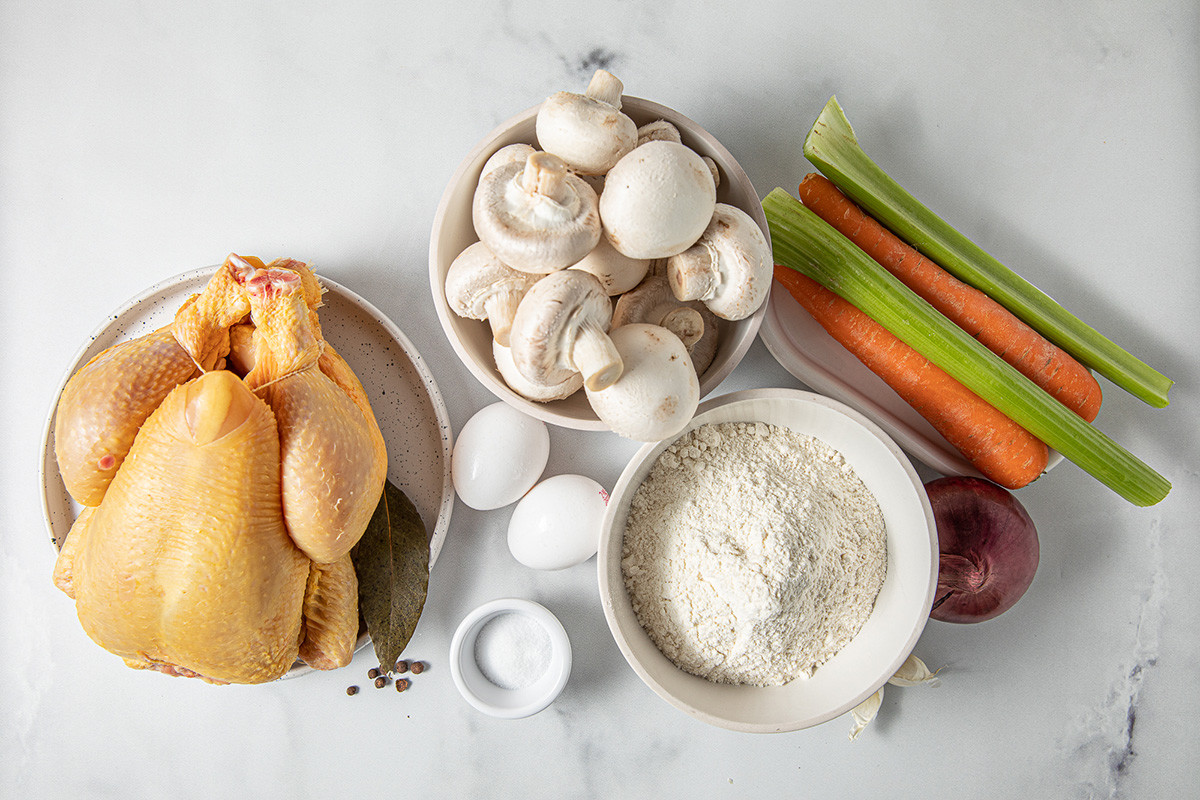
For noodles:
- Flour - 200 g
- Eggs - 2 pcs
- Salt - 1/2 tsp
For soup:
- Carrot - 1 pc
- Onion - 2 pc
- Celery - 2 stalks
- Leek - 1 pc
- Potatoes - 4 pcs
- Dried Porcini - 1/5 cup
- Champignons (fresh chantarelle or porcini) - 300 g
- Parsley
- Bay leaf - 3 pcs
- Dill
- Black pepper
- Butter - 30 g
- Salt
- The whole chicken (for a non-vegetarian variation)
Preparation:
1. To make the noodles, put flour, eggs and salt into a bowl and knead hard dough for about 15 minutes.
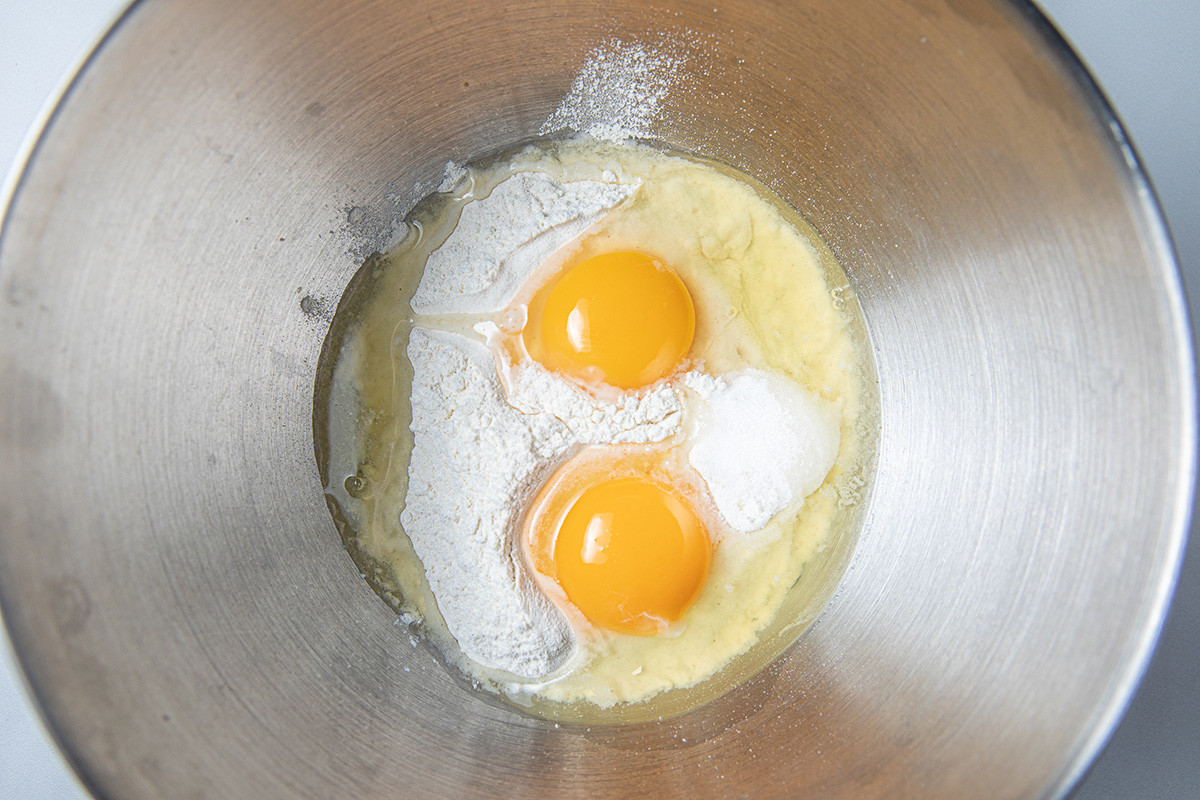
2. Cover the dough with a film and let it rest for 30 minutes.
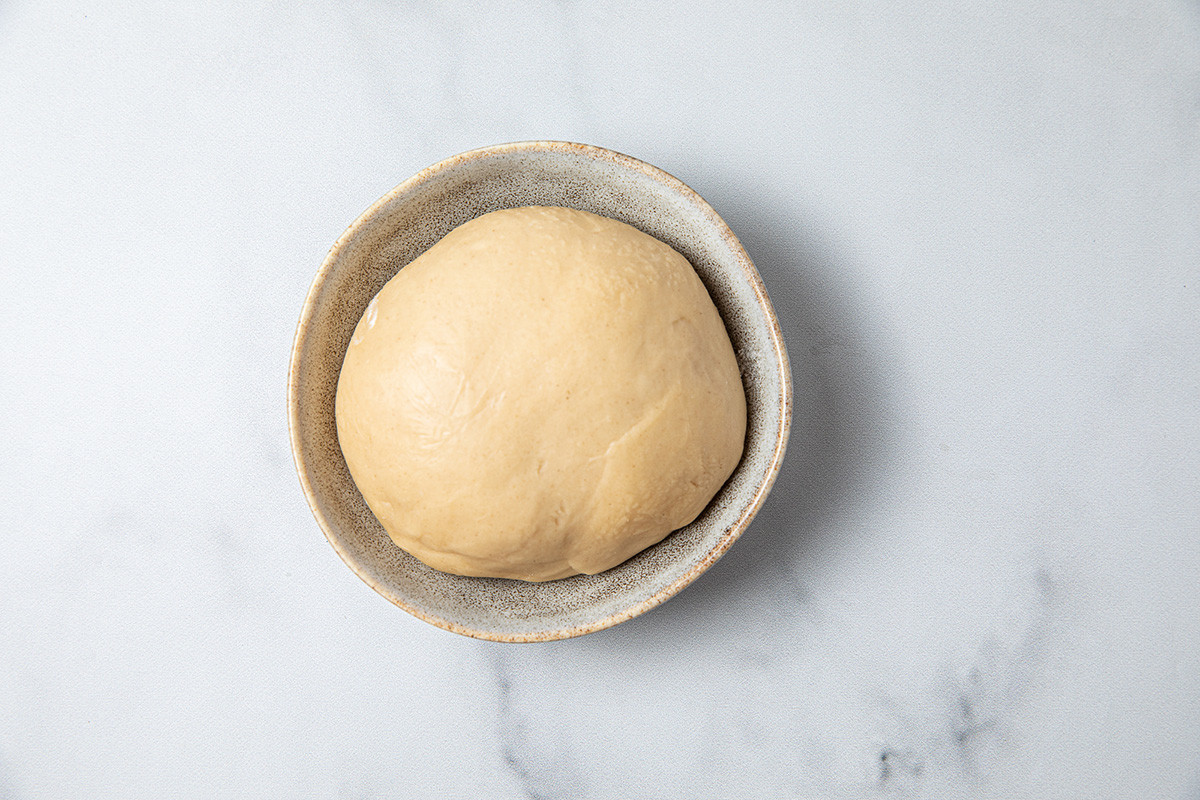
3. Divide the dough into 4 parts.

4. Roll out four thin sheets. They should be slightly transparent. Let them stay on the working surface to dry for about 15-20 minutes. Make sure that they are dry but still elastic. That will prevent them from sticking together while folding them.

5. Fold each sheet in a triangle.
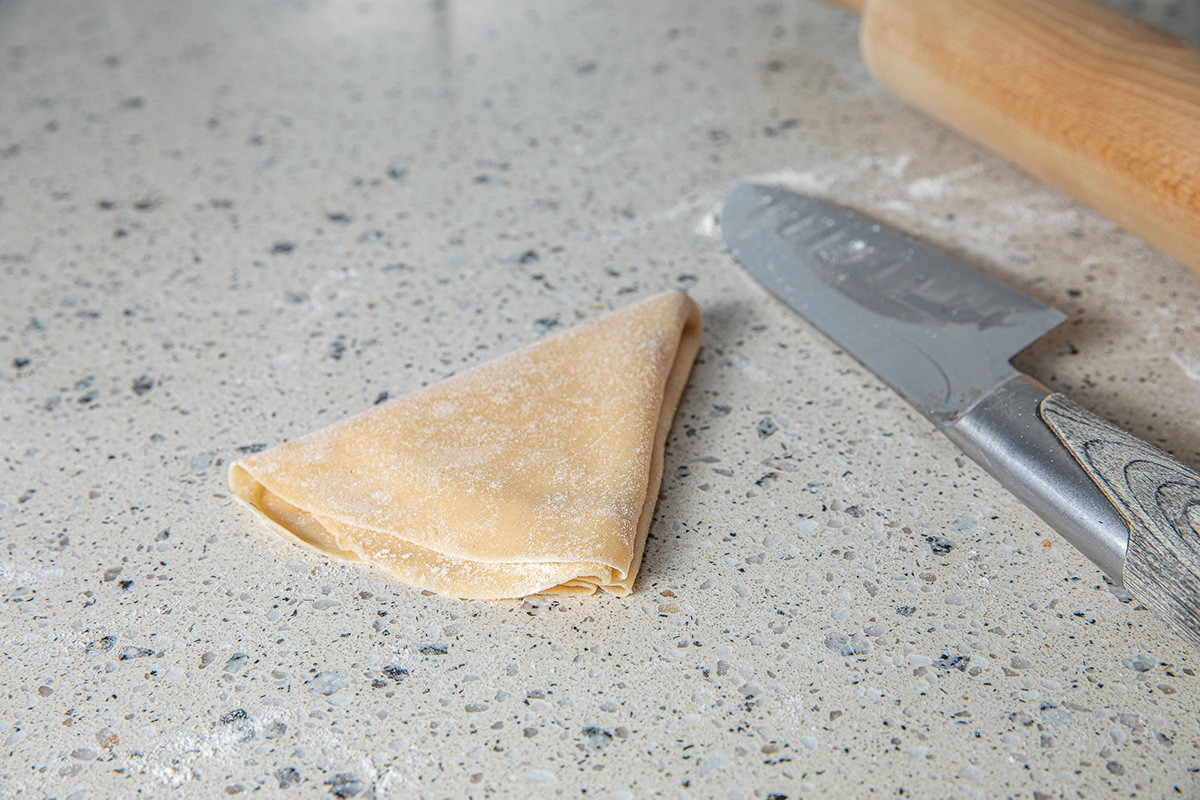
6. Cut the dough in thin stripes (about 3 mm).
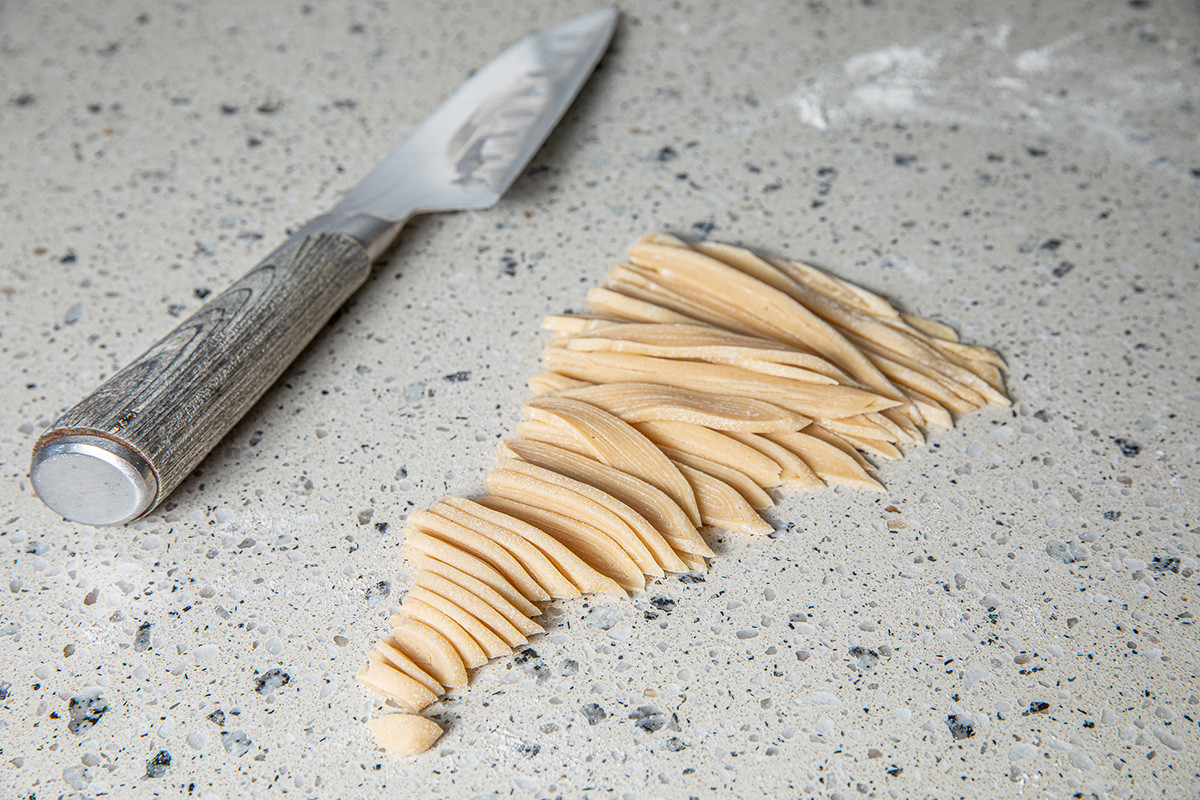
7. Spread them along the tray and let noodles dry out.
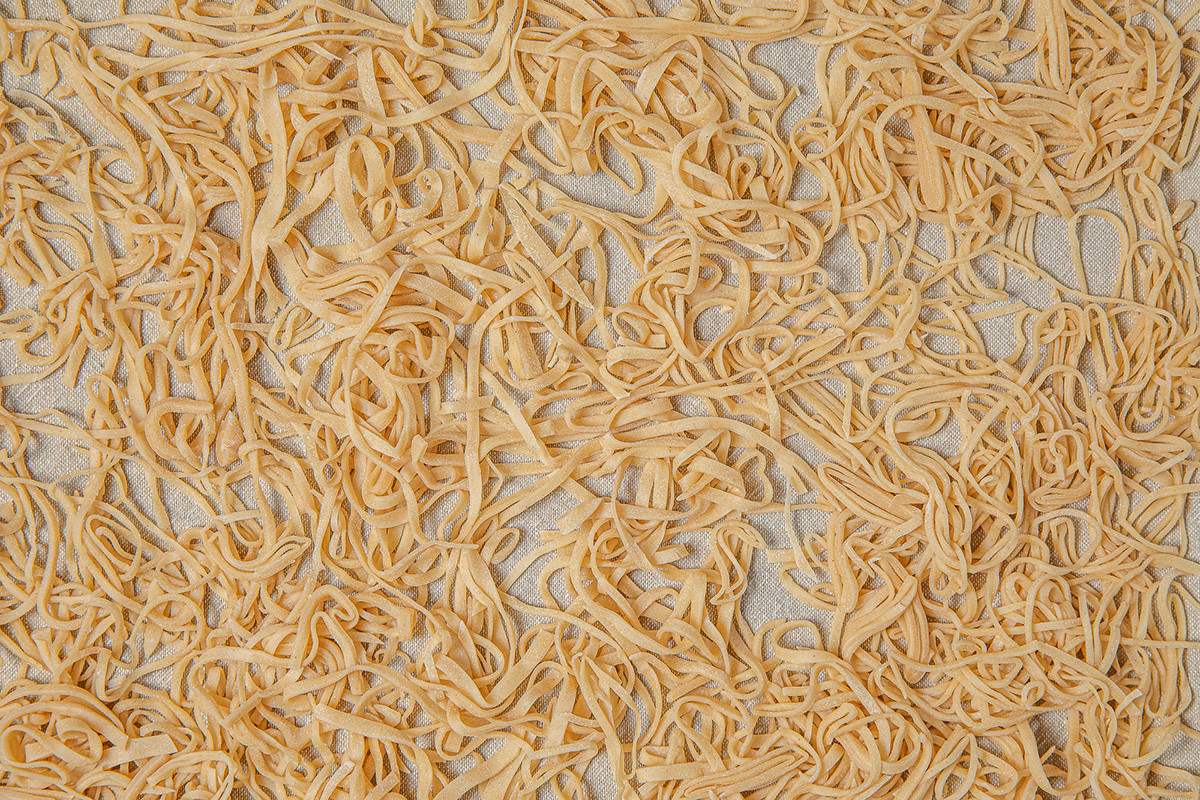
8. If you go for a vegetarian variation, you may start making stock by adding carrots, onions, celery, and bay leaf to the water. Let it boil for 30 minutes.
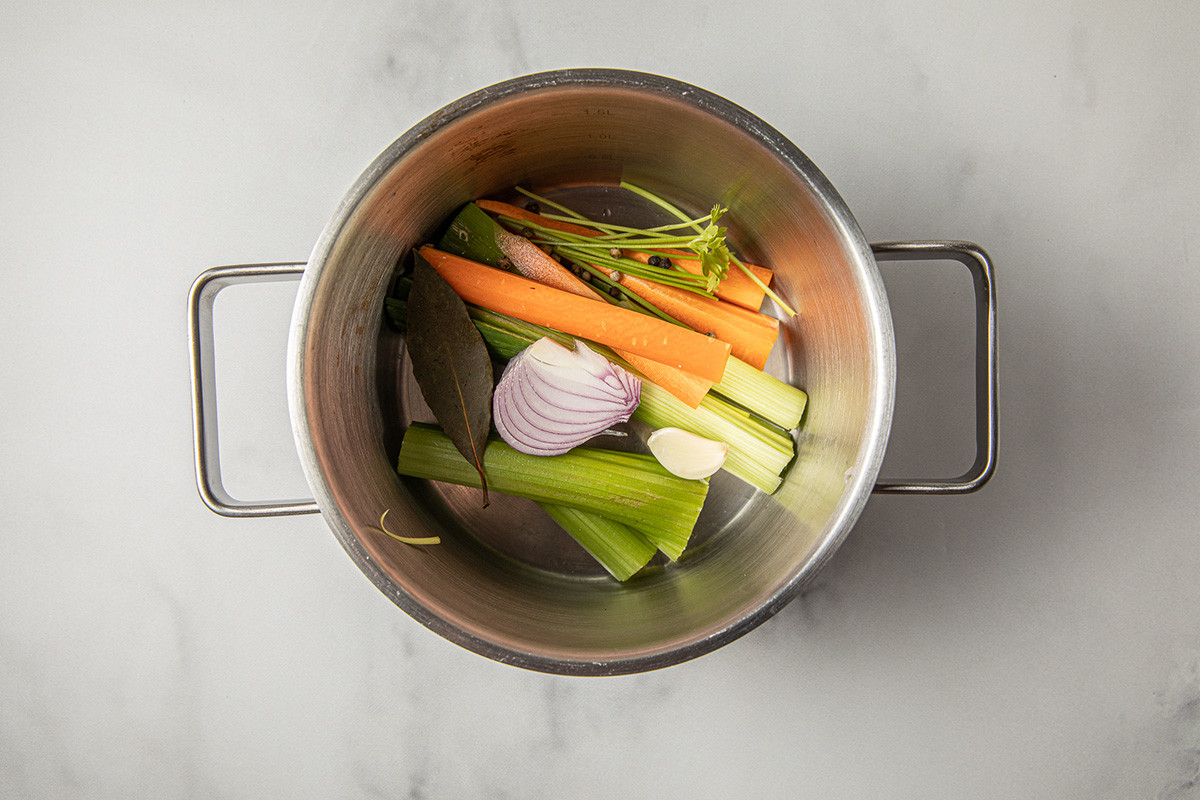
9. If you make chicken stock you will need to boil water for about 2 hours.
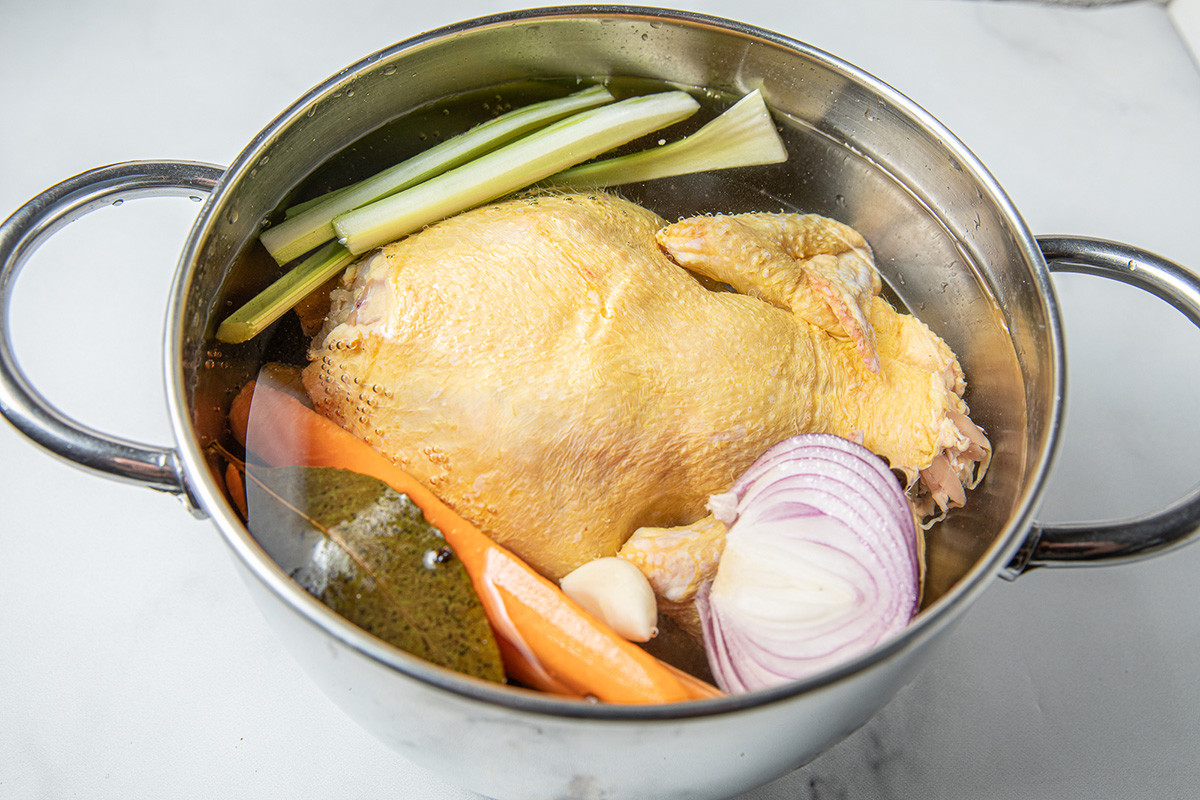
10. Remove the vegetables (and chicken) from the stock.
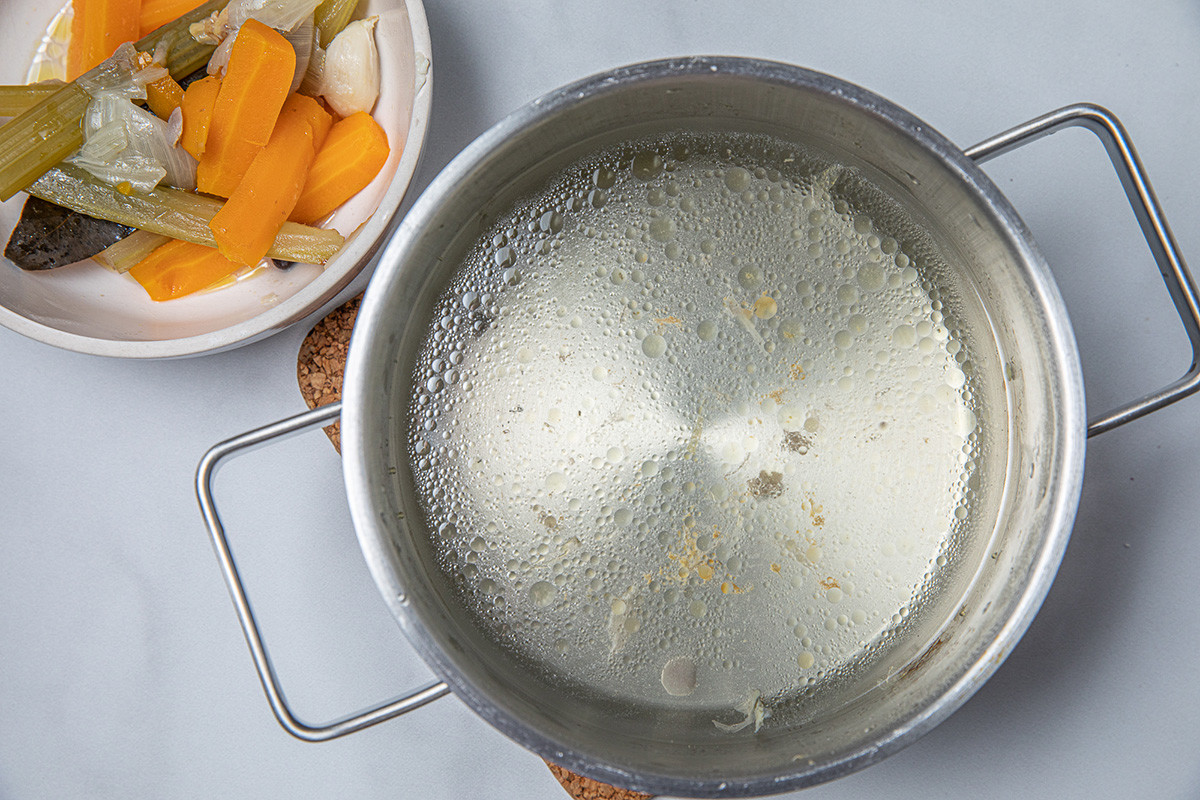
11. Cut potatoes and boil in slightly salty water. I also added a bay leaf, onion and black pepper to give potatoes more flavor.
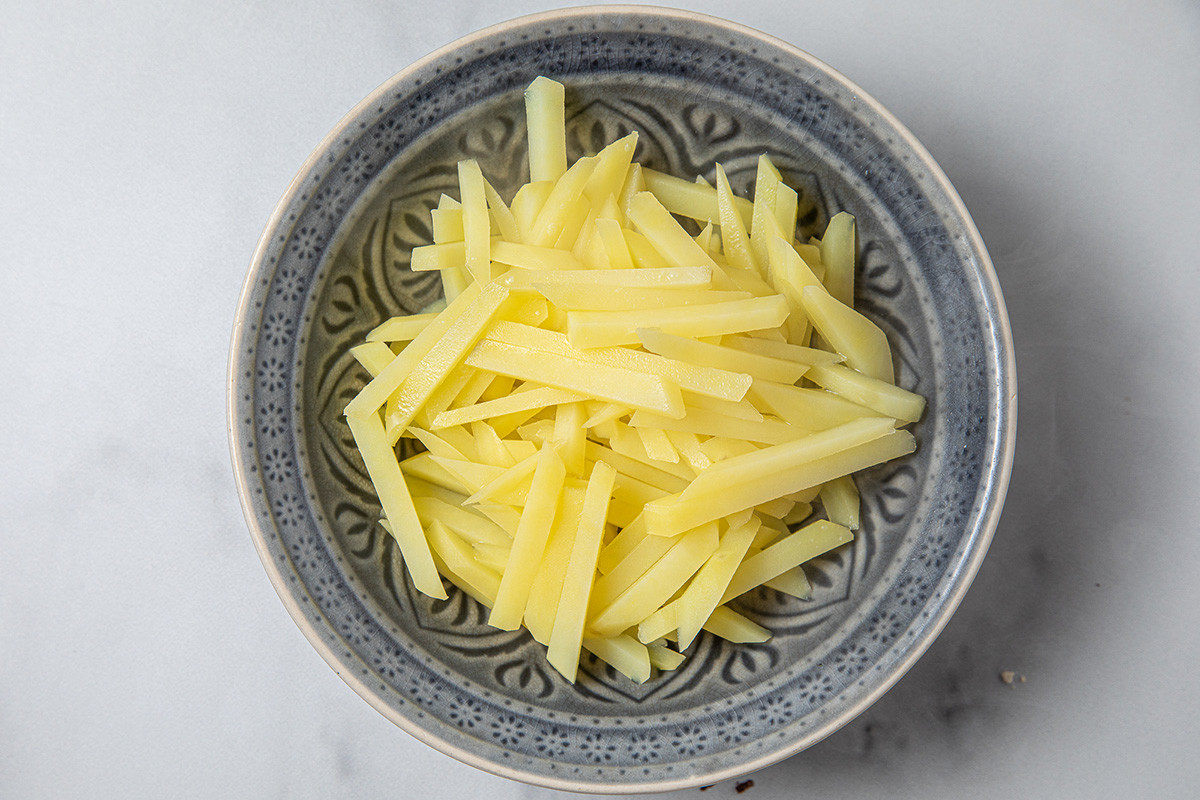
12. Boil dried porcini with bay leaves, salt and pepper for about one hour. Take out porcini and chop them.

13. Cut fresh mushrooms and leek, and fry them until soft and golden. Chop greens.
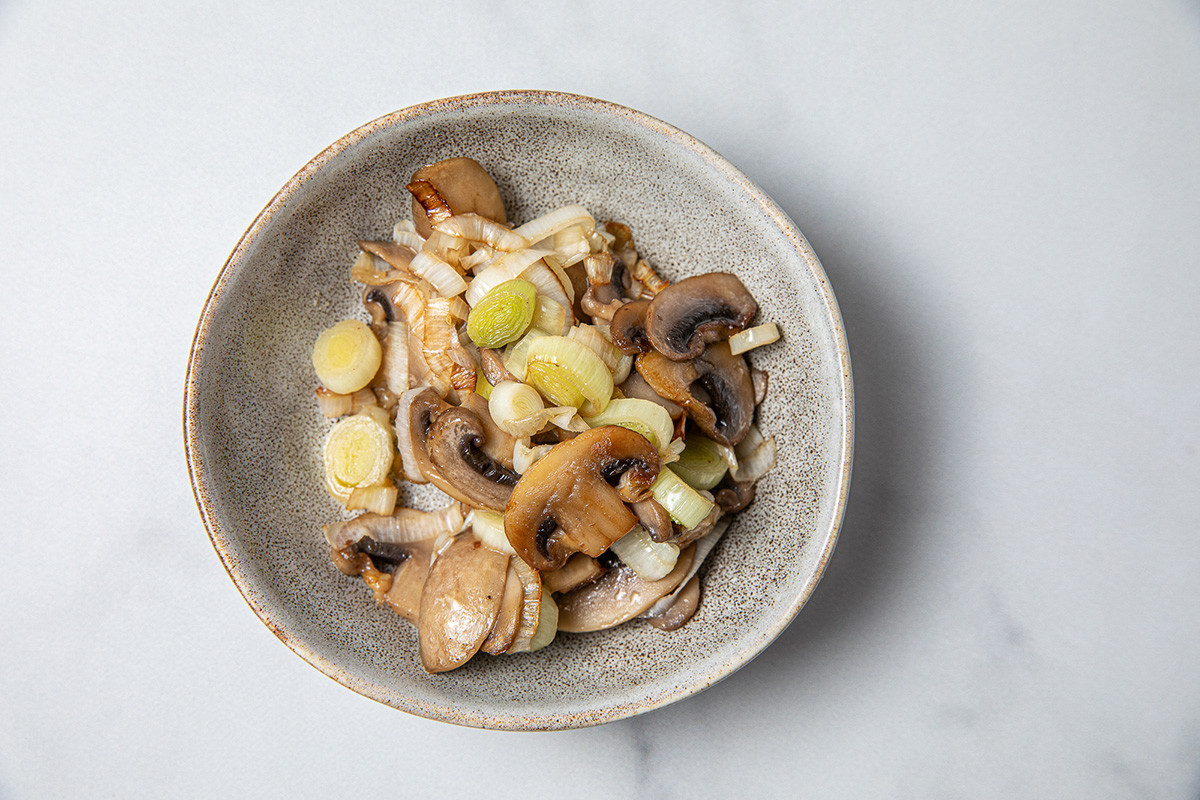
14. Bring the vegetable stock to boil and add noodles. It will be ready in a few minutes. Put noodles into a deep plate.
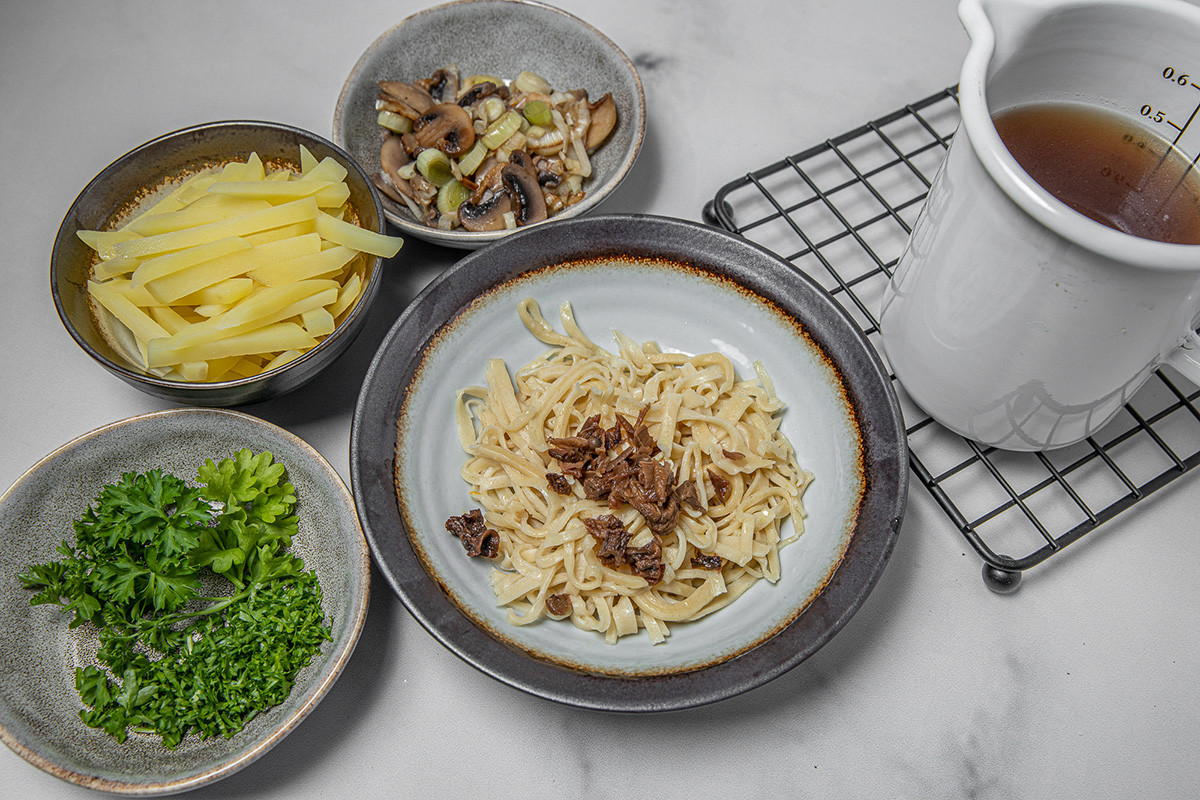
15. Add potatoes, chopped dried mushrooms, fried champignons and leek, chopped greens, a bit of butter and black pepper.
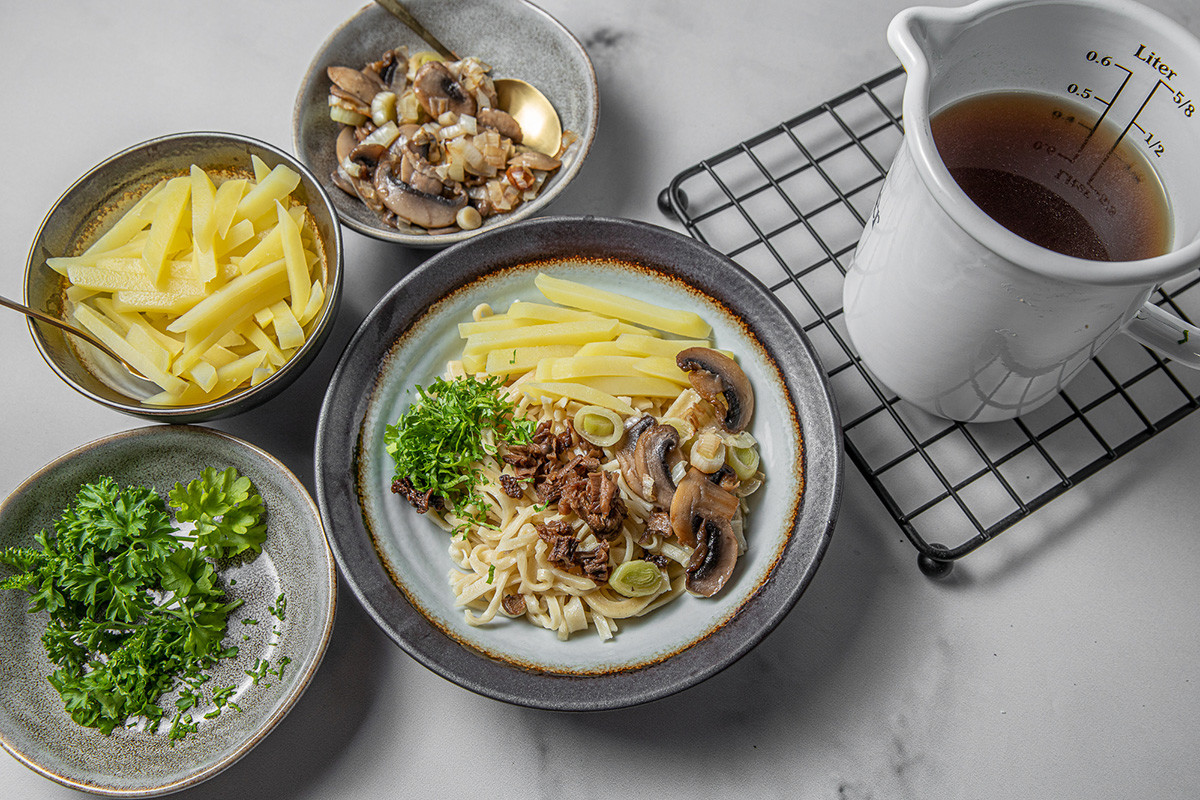
16. Pour the porcini stock into a plate.
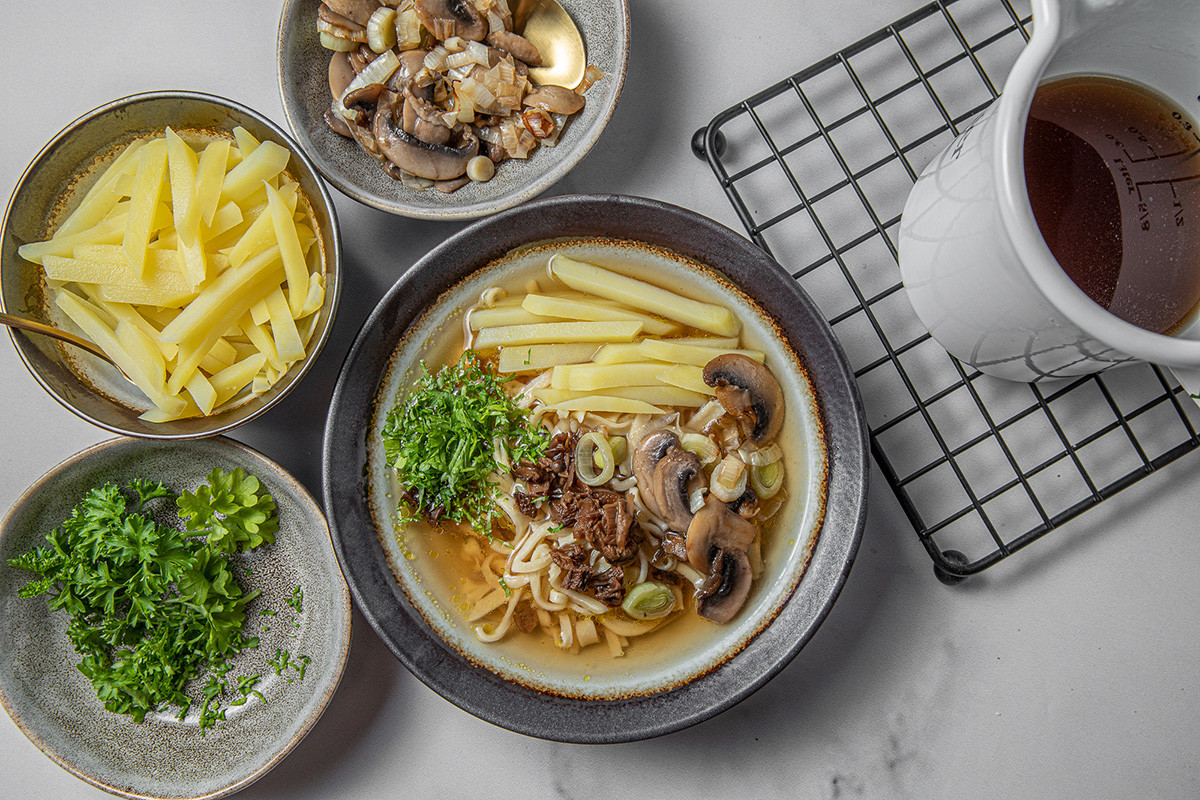
17. Enjoy!
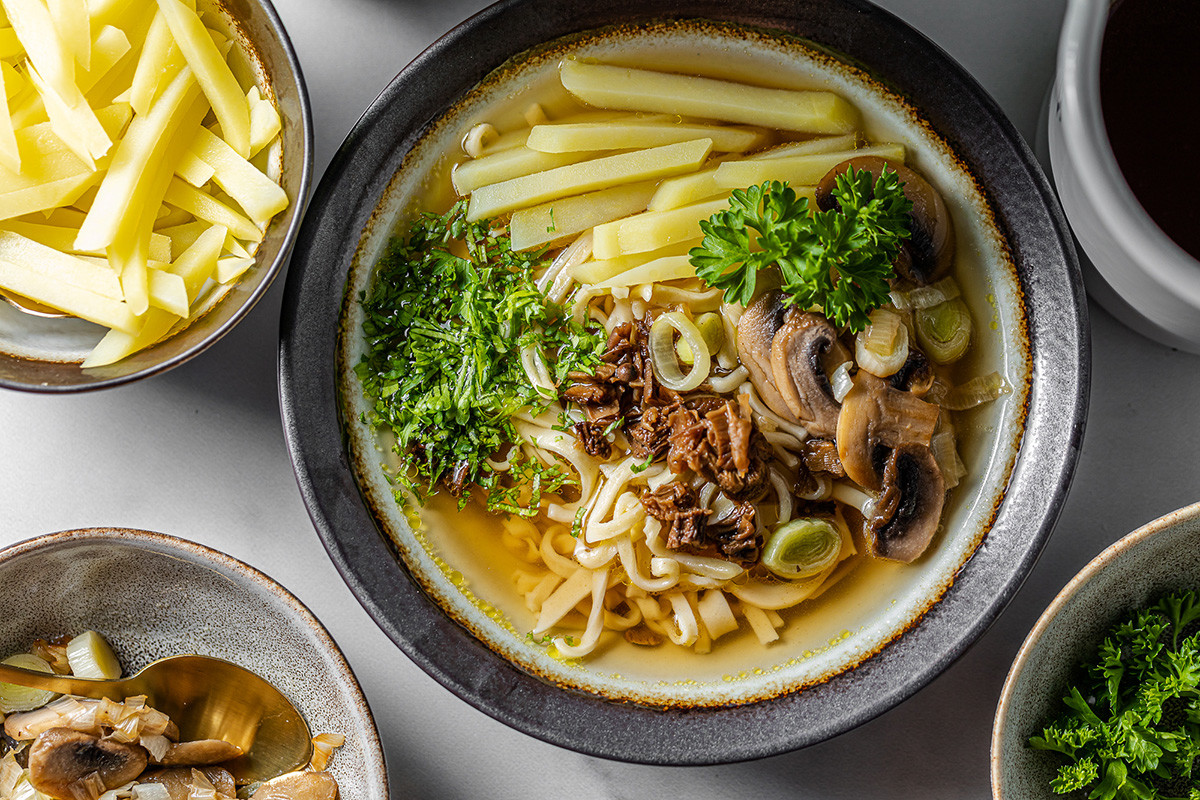
READ MORE: We know what chanterelle recipes you’re going to try this summer
If using any of Russia Beyond's content, partly or in full, always provide an active hyperlink to the original material.
Subscribe
to our newsletter!
Get the week's best stories straight to your inbox